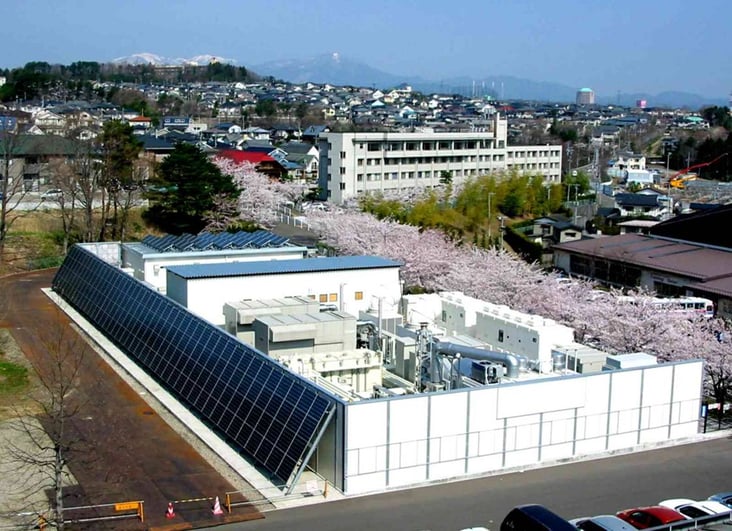This post is one in a series featuring the complete slate of advanced energy technologies outlined in the report This Is Advanced Energy.

A microgrid is a network of connected electricity generation assets, controls, and loads that can operate independently from a utility grid and/or easily connect to or disconnect from a utility grid. Microgrids usually range in capacity from less than 1 MW to 40 MW, and can generally be classified as customer microgrids, utility or community microgrids, or remote microgrids. Virtual microgrids link distributed generation (DG) at multiple sites. Remote and customer-owned microgrids are well-established applications, while utility, community, and virtual microgrids are emerging alongside intelligent grid technologies. In all cases, microgrids can generate, distribute, and regulate the flow of electricity to consumers at a local level.
Remote microgrids provide power to communities far from utility networks, as is common in remote villages in Alaska. Customer-owned microgrids typically refer to those at large facilities owned by a single customer, such as military bases, college campuses, and hospital complexes. Customer-owned microgrids are interconnected to the utility system, but they can disconnect (or “island”) to provide electricity when the utility grid is down. Utility or community microgrids refer to portions of the grid within the utility system that are con gured to function independently. These microgrids rely on software and other technologies to synchronize and operate in parallel to the larger grid, yet can also act as a microgrid when called upon to do so, such as during a widespread power outage.
The United States is the leader in microgrid adoption, with nearly 1,500 MW installed and another 1,100 MW in planning, according to Navigant Research. Most of these installations are customer-owned, such as the microgrid used at the U.S. Food and Drug Administration’s research facility in White Oak, Maryland. This microgrid allowed the facility to maintain operations for two and a half days during Hurricane Sandy, while the utility grid was down. Microgrids can incorporate a variety of advanced energy technologies. A microgrid at the commercial-residential Mesa del Sol development in Albuquerque, New Mexico makes use of a 50 kW solar PV system, an 80 kW fuel cell, a 240 kW natural gas generator, an absorption chiller, and energy storage from lead-acid batteries and cold thermal storage.
Microgrids offer increased resilience and reliability. During blackouts or extreme weather events, microgrids can continue to generate and deliver electricity to connected loads independent of the utility grid. Microgrids are particularly attractive for secure buildings and campuses that require high-reliability power, including military bases. Many remote and customer-owned microgrids use combined heat and power systems (CHP), providing customers with year-round energy cost savings. Utilities may choose to deploy microgrids on their networks to achieve cost savings relative to traditional “poles and wires” solutions, or to meet the needs of customers with requirements for high-reliability power. Third parties are also beginning to offer microgrid options, such as SolarCity’s GridLogic “microgrid-as-a-service,” which provides turnkey solutions combining solar PV, batteries, and backup generators in a grid-tied microgrid.
